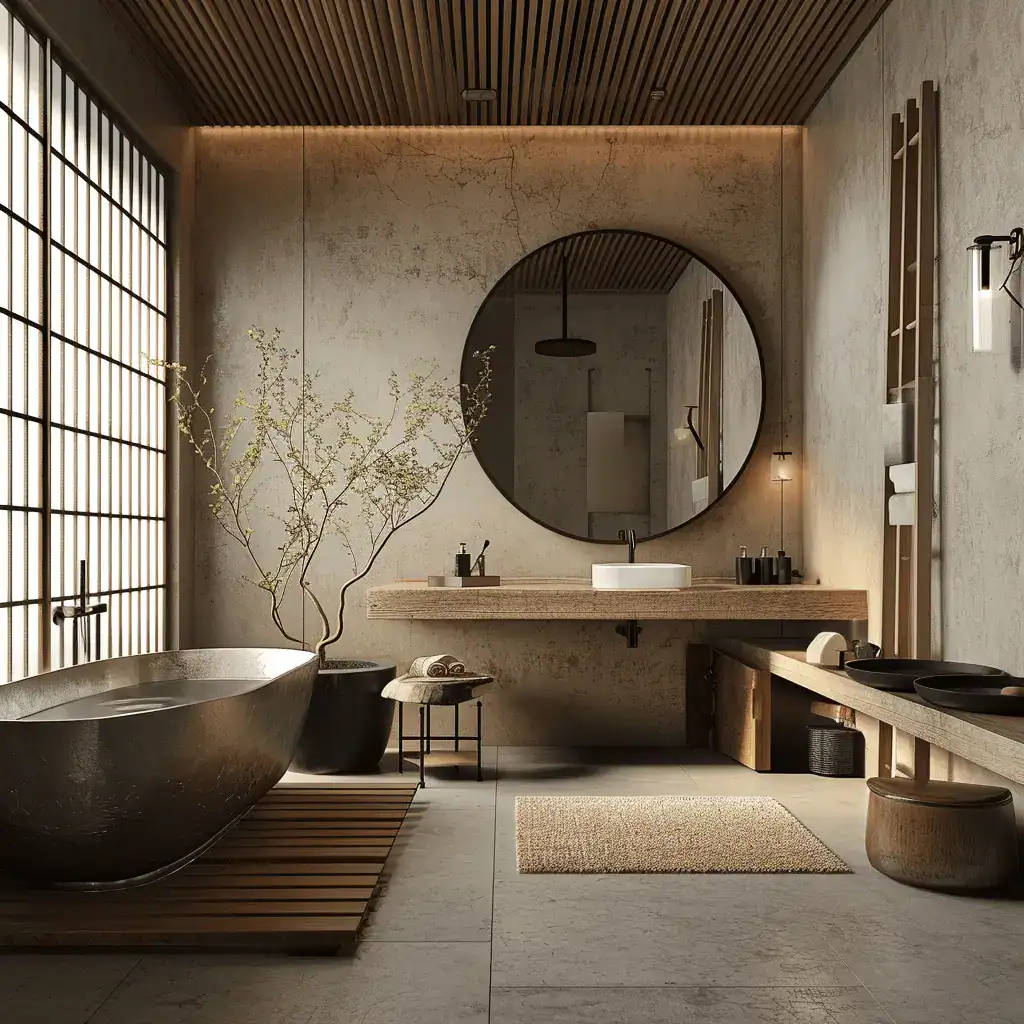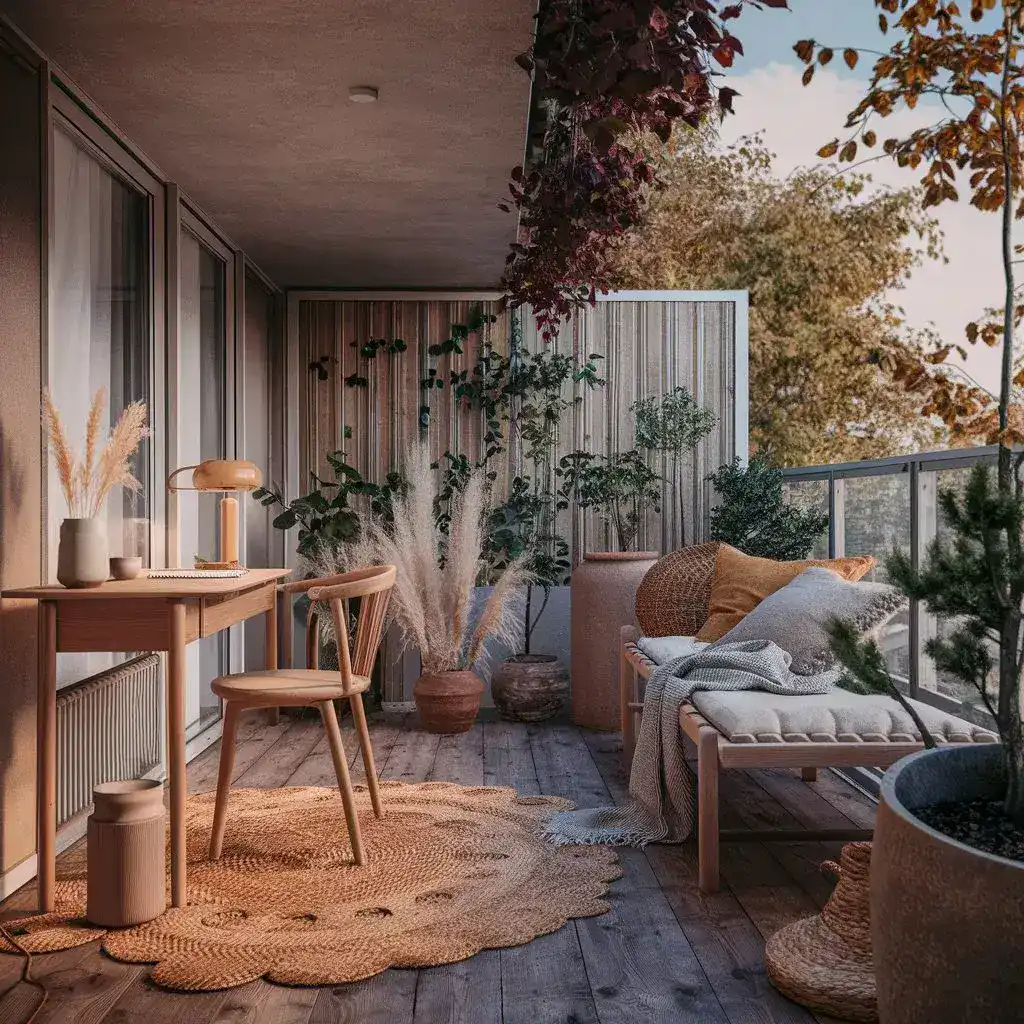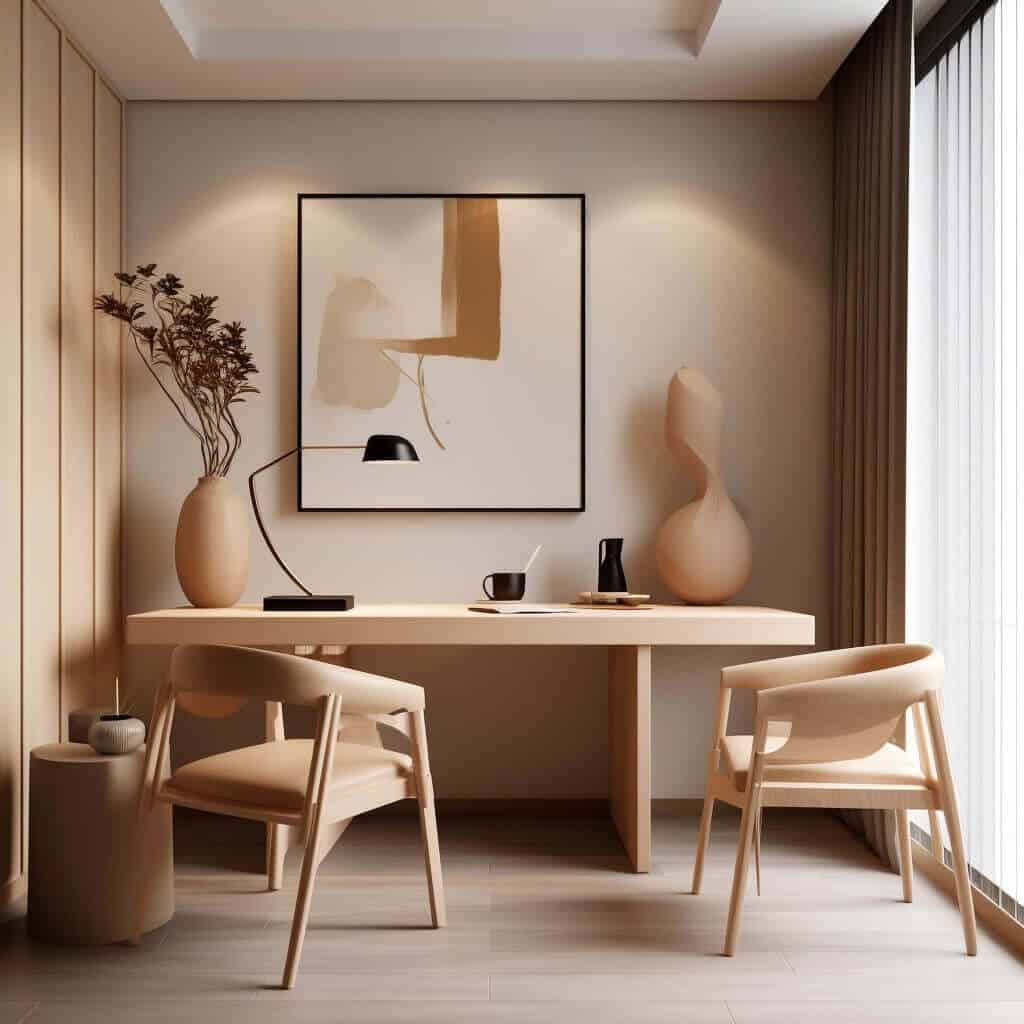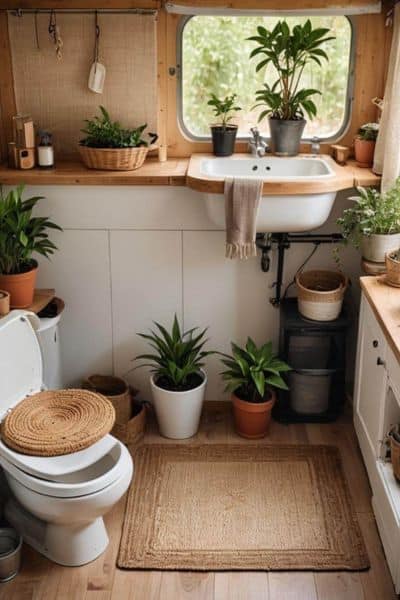Japandi style has captivated the design world with its calming, minimalist aesthetic. A beautiful blend of Japanese rustic minimalism and Scandinavian cozy functionality, Japandi is all about balance, tranquility, and simplicity. But pulling it off isn’t always easy.
If you’re drawn to Japandi decor but your space feels off or cluttered, you might be making one of the common mistakes that dilute the essence of this serene style.
In this guide, we’ll break down the most frequent Japandi decor mistakes to avoid, and more importantly, how to fix them — so your space reflects the clean, natural harmony Japandi is known for.
1. Overdecorating the Space

The Mistake: Japandi is rooted in minimalism. A common error is adding too many decorative pieces — vases, prints, textiles — which can quickly clutter the room and overwhelm the senses.
How to Fix It:
- Choose decor with intention. Ask: Does this piece serve a function or contribute to the atmosphere?
- Embrace negative space. Let your room “breathe.”
- Limit yourself to one or two focal pieces per room, such as a handcrafted ceramic or a sculptural lamp.
Tip: Use the “one in, one out” rule when styling. If you add something new, remove something else.
Japandi is about mindful curation. Instead of filling up empty spaces, think of them as design features. A clean corner can draw more attention to your hero pieces and create a calming flow in the room.
2. Neglecting Natural Materials

The Mistake: Japandi style thrives on natural elements like wood, stone, and linen. Using synthetic materials or glossy finishes can break the visual flow and feel sterile or out of sync.
How to Fix It:
- Opt for furniture and decor made of oak, walnut, bamboo, or ash.
- Layer in organic textiles such as cotton, wool, or linen.
- Incorporate stone accents — a soapstone tray, a terrazzo planter, or raw concrete details.
Bonus: Natural materials age beautifully and add character over time.
Bringing nature indoors is foundational to Japandi. Consider not just materials but also how they feel and age. Choose finishes that grow warmer and more textured with time rather than cold and polished surfaces.
3. Inconsistent Color Palette

The Mistake: Using bold or clashing colors goes against the Japandi ethos. A chaotic palette can make a room feel disjointed rather than serene.
How to Fix It:
- Stick to earthy tones: warm beiges, charcoal greys, muted greens, and off-whites.
- Use black sparingly for contrast and depth.
- Apply the 60-30-10 rule: 60% dominant color (walls, large furniture), 30% secondary color (rugs, curtains), and 10% accent color (pillows, small decor).
Pro tip: Color harmony creates emotional harmony. Let your palette evoke calm, not chaos.
4. Too Much Scandinavian, Not Enough Japanese Influence

The Mistake: It’s easy to go heavy on the Scandinavian side — clean lines, light wood, hygge accessories — while neglecting the Japanese contribution.
How to Fix It:
- Integrate Japanese principles like wabi-sabi (finding beauty in imperfection).
- Add handmade pottery, low-profile furniture, or traditional Japanese art.
- Use shoji screens or bamboo accents for subtle Japanese flair.
Balance is key — combine the softness of Scandi with the depth of Japanese design.
You can also bring in Japanese rituals: a tea corner, a meditation mat, or a bonsai focal point. These deepen the atmosphere and root your decor in lifestyle, not just visuals.
5. Lack of Functional Simplicity

The Mistake: Japandi isn’t just about aesthetics; it’s about function. If your space looks minimal but doesn’t feel livable or comfortable, you’ve missed the mark.
How to Fix It:
- Choose furniture that’s both beautiful and functional — think storage benches, modular shelves, or minimalist desks.
- Remove items that don’t serve a purpose.
- Prioritize clean surfaces and easy movement through rooms.
Ask yourself: Could this room support a calm, mindful lifestyle?
A good Japandi space should encourage you to slow down. Create zones for rest, reading, working, and rituals. Add trays, baskets, or hidden storage to eliminate visible clutter.
6. Ignoring Texture and Layering

The Mistake: A minimalist room without texture can feel flat or sterile. Japandi encourages layering, but with a light touch.
How to Fix It:
- Combine textures: matte ceramics, woven baskets, linen cushions, and natural fiber rugs.
- Layer bedding or throw blankets in soft, muted hues.
- Add visual warmth through wooden slats, handmade tiles, or ribbed glass.
Think of texture as emotional softness. It’s not about excess — it’s about variety in subtle, tactile ways. Aim to stimulate the senses gently.
7. Using the Wrong Lighting
The Mistake: Harsh overhead lighting or cold LED bulbs clash with Japandi’s soothing aesthetic.
How to Fix It:
- Use warm white bulbs (2700–3000K).
- Include multiple light sources: pendant lights, paper lanterns, and floor lamps with dimmers.
- Aim for soft, diffused lighting that enhances natural tones.
Good lighting is subtle and supports the overall mood.
Add candles or salt lamps for ambiance. Use rice paper lamps or bamboo light shades to soften and diffuse light naturally.
8. Not Letting Nature In
The Mistake: Japandi design deeply values a connection to nature. A space without any greenery or outdoor reference can feel disconnected.
How to Fix It:
- Add houseplants with sculptural forms like bonsai, snake plants, or rubber trees.
- Place plants in neutral ceramic or clay pots.
- Keep windows unobstructed to let in as much natural light as possible.
Even a single, thoughtfully placed plant can change the feel of a room.
If you live in a city or small apartment, a nature-themed print, water fountain, or small terrarium can mimic nature’s effect.
9. Ignoring the Entryway
The Mistake: Overlooking your entryway can disrupt the Japandi flow and affect first impressions.
How to Fix It:
- Keep the area tidy and clutter-free.
- Use a shoe bench, a wall hook, or a slim console table with hidden storage.
- Consider a simple welcome mat in jute or wool.
Start the Japandi experience the moment someone steps inside.
Add a calming scent — think sandalwood, cedar, or hinoki — to greet guests with a sensory welcome.
10. Trying to Rush the Look
The Mistake: Japandi is not a style you can rush. Fast furniture, mismatched Pinterest inspiration, or trying to copy-and-paste a look leads to an inauthentic feel.
How to Fix It:
- Curate your home over time with meaningful pieces.
- Mix new finds with vintage or handcrafted items.
- Live in your space and let it evolve naturally.
Japandi isn’t a trend — it’s a lifestyle.
Bonus: Japandi in Small Spaces
You don’t need a large, airy home to create Japandi vibes. In small apartments:
- Use multi-functional furniture like lift-top coffee tables.
- Keep the palette simple to expand visual space.
- Let in as much natural light as possible.
A small, well-designed Japandi corner can feel more luxurious than an oversized room full of clutter.
Quick Reference Table
| Mistake | Why It Hurts Japandi | How to Fix It |
|---|---|---|
| Overdecorating | Clutters the space | Use fewer, intentional items |
| Synthetic materials | Feel cold and artificial | Use wood, stone, and natural textiles |
| Bright colors | Breaks the calm aesthetic | Stick to muted, earthy tones |
| Too Scandi | Imbalanced look | Add Japanese elements like wabi-sabi |
| No function | Style over substance | Choose useful, beautiful pieces |
| Flat textures | Feels dull or clinical | Layer soft, natural textures |
| Harsh lighting | Interrupts tranquility | Use warm, diffused lights |
| No plants | Disconnects from nature | Add greenery with structure |
| Ignored entryway | Sets the wrong tone | Simplify and tidy up |
| Rushed design | Feels inauthentic | Curate your space slowly |
Final Thoughts: Less But Better
Japandi design is a study in restraint, elegance, and peaceful intention. Avoiding the mistakes above can help transform your home into a calming retreat where every object has a purpose and every space encourages mindfulness.
When in doubt, remember the Japandi mantra: less but better.
As you refine your space, enjoy the process. Let your home evolve as a reflection of your lifestyle, values, and daily rhythm. Minimalism isn’t about empty — it’s about essentials.
Save This for Later! Pin this guide to your Pinterest decor board so you can come back to it anytime. Creating a Japandi home is a journey worth savoring.

I’m Katerina Lithopoulou, co-creator of DIY Cozy Living. I’ve always loved the little things that make a space feel special — soft textures, warm lighting, thoughtful details. With a background in language and a passion for photography and cozy design, I enjoy turning everyday inspiration into simple ideas people can actually use.
My motto: “Cozy isn’t a trend — it’s a feeling.”



